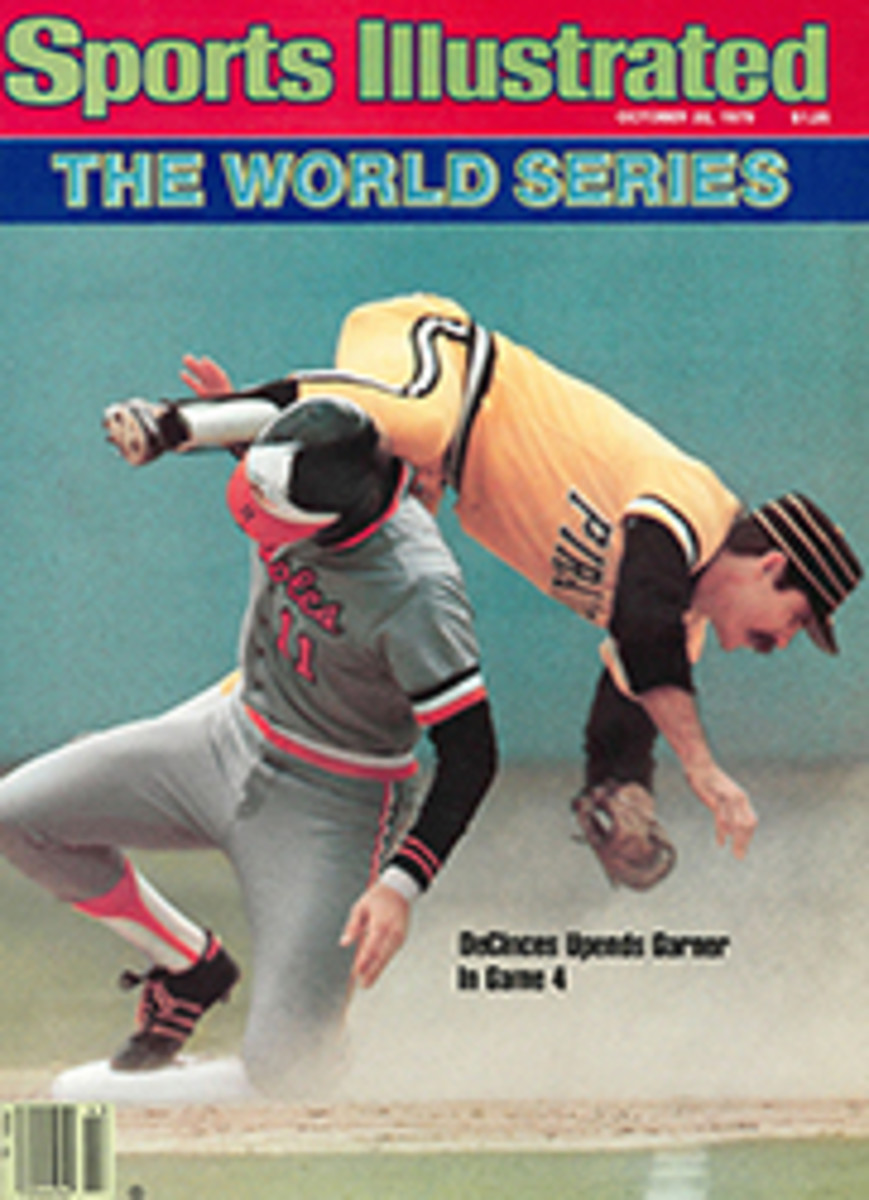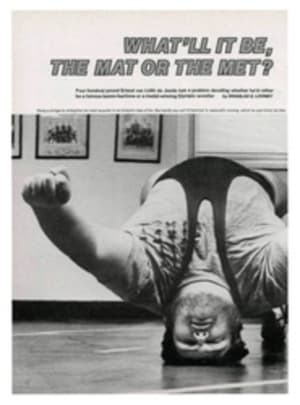
MIAMI 1952-56
I am convinced that homecomings are mostly positive expressions, and though I harbor minor reservations, I do not share the skepticism of the Miami sophomore I happened upon who likened the one we attended (separately) to a brush with Zen Buddhism. He found it interesting, he said, but of no particular meaning. Most of my experiences with the ritual have come while traveling to colleges other than my own. The prospect of going back and reexperiencing one at the University of Miami sent my mind into a kind of vertical roll, so removed was I. I had been busy Making A Career, even as an undergraduate, and had not developed as a homecomer. I suspected that if you were not a perennial and had been pushed to catch up overnight, like an artificially ripened tomato, a Homecoming could be a bad trip. Most of all, I thought I would feel like an intruder. This turned out to be an unfounded fear. I did not feel like an intruder at my Homecoming. I felt intruded upon.
Early in the week I took a ride through the campus to see the house decorations (the Hurricanes were up against a team called the Aztecs; there seemed to be a number of unusual acts you could perform on Aztecs) and lunched, by happenstance, with a professor I had not seen in 15 years. I remembered his having lisped when he really got into a subject. I told him that the campus seemed quite pleasant and bustling and I was having a good time already.
"Not after you read this," he said, and pushed a copy of a Sunday magazine section story under my nose. Under a splashy headline that said THE BIGGEST AND BEST UNIVERSITY IN ALL OF CORAL GABLES WANTS YOU TO THINK OF IT AS THE CORNELL OF THE SOUTH, the writer resurrected the clichèd specter of "Suntan U." She said that Miami's legendary position as a "party school" was intact, and that its image was "burnished only by the sun." She paid grudging tribute to the fact that the Miami medical school was so good it had to turn away 90% of its applicants, and the law school 80%, but in total the "gentlemen and gentlewomen" of the university were, like "the ancient Sisyphus, doomed to roll the stone up the mountain, the stone that keeps falling back."
My professor friend looked like a man who had been rolling stones all day. What bothered him most of all, he said, was the hoary appellation "Suntan U." He said The Saturday Evening Post had used the line 30 years ago, "and it wasn't so funny then, either." I consoled him that the image never bothered me, that I had more confidence in my education than that. Besides, what did he think college kids do with their spare time, anyway? "You think they ignore the ski slopes in Colorado? The beer halls in New Haven?" He shook his head sullenly. "Thuntan U," he muttered. I was glad to get out and let him pay the check.
The Homecoming parade had more people in it than watching it. One sponsoring group, the school of engineering and architecture, had to hand-carry its decorations up Ponce de Leon Boulevard and down Miracle Mile because somebody stole the float bed. But I had my kids along, and parades are always good when you've got kids to explain the fine points. Happily, I ran into George Mira, Miami's alltime quarterback. George's figure had settled some, but he still looked as if he could throw a football through a wall. I was pleased to learn his pizza-parlor business was thriving.
When Mira moved off to find the float he was supposed to ride, a man in his 20s, who had been eavesdropping, volunteered the opinion that Miami's teams had never been as exciting as they were when Mira was firing away in the '60s. The young man had the despairing face of someone trained not to cry under punishment, and who had had many chances to practice. "We used to fill the Orange Bowl," he said. "Now we're lucky to get 20,000." He said it was hopeless, what with the insatiable Dolphins usurping Miami's fans.
I told him he had to have more faith in college football than that; that it was an infinitely better game and that all it would take would be a big victory or two. He said yeah, "but over whom? We play all the good teams on the road and get waxed, and we get to 'come home' to see San Diego State."
"The Aztecs?"
"Yeah."
I said not to worry about attendance, that other big-city schools—Pittsburgh, USC—had turned their programs around despite the pro menace, and Miami would, too.
"Not under Lou Saban," the young man said.
"Why not?"
"He's a here-today, gone-tomorrow. He never finishes a job."
At an alumni breakfast at the university, I was pleased to get the chance to hear Coach Saban himself assess the situation. I figured Saban for a realist, not a quitter, although I knew he had presented a moving target over the years. It was only his second year at Miami, but it was his 10th coaching job.
His talk was nothing if not realistic. He seemed to have been influenced by the same prose stylist who inspired the writer of the Sunday magazine article. He told us the football team's attempts to regain respectability were like trying to climb a mountain and "when you get to the top of the ledge with your fingers, someone is on top stepping on your hands and saying, 'You're not quite ready yet.' "
Listening, I experienced a sudden fatigue, as one might who has been climbing mountains and rolling stones. I wondered how long Saban would stand getting his fingers mashed, and mentally compared him with the football coach Miami had when I was in school, the late Andy Gustafson. Gus had come down from West Point to give Miami its best teams in the '50s and early '60s and had sunk his roots. Even when he had an occasional loser and was under fire, he never threatened to pull out.
Saban also showed up for the barbecue-pep rally on the student union patio. There he sounded more hopeful, I was pleased to note. Although the barbecued chicken ran out, the soft night air began to fill with the unmistakable aroma of optimism. Fortified to cheer, we moved down the patio toward the student lake, and just before the rally started I bumped into a former classmate whose name I miraculously remembered. He had retained most of his hair but none of his waistline and said he was "into plastics." Apparently plastics were a springboard to affluence, because he said he was now a regular contributor to the university and returned every year for Homecoming.
I told him the old school looked pretty prosperous, too; that in driving around I had gotten disoriented a number of times, what with all the new buildings. He said yes, but did I know you could get high on the pot fumes just walking through some of the dorms? I said you hear that at every campus you go to. It was the signature of the generation.
He said yes, but did I know that a delivery girl bringing pizza to students in a dorm room late one recent night got "assaulted"? I said the old school looked pretty cozy and safe to me. He said yes, but did I know what lengths they had to go to? "We've got an after-dark escort service now to get girls across the campus safely." I told him that was a sure sign that chivalry was not dead, and I moved away under the pretense of finding a lost child.
The Miami publicist called the homecoming game with San Diego State a match of "two ships passing in the night." They almost passed unnoticed. Only 17,000 people showed up for the game, making a puny impression on the massive Orange Bowl. I was determined to have a good time anyway, and almost succeeded. The alumni had set up an open bar on the 50-yard line beforehand, and those of us in Iron Arrow—a men's honor society distinguished by its Seminole Indian jackets—were a highly enthusiastic group by the time we made our "traditional tunnel" for the players to run through as they came onto the field. But as we made our way back to our seats, a fellow tribesman told me we had to "stick together" through all this.
"Stick through what?" I said.
He said didn't I remember that Iron Arrow, "the highest honor achieved by men at the university," had been forced off campus because of our "discrimination" against women? I told him I had nothing against women, at least not that I knew of. I said as far as I was concerned there were some I had seen at the alumni dance the night before who would look very good in a Seminole Indian jacket.
"I missed the dance," he said. But did I realize, he went on, that while I was dancing, the Miami undergraduates having their formal on Miami Beach had done $10,000 in damage to the Konover Hotel's men's room? I told him that at least they showed some spirit. He said it was no laughing matter. I said I'd see him around.
It was months later before I sat down to put my thoughts together. I counted on time to be a leavening factor. In the interval, Lou Saban quit (with four years on his contract) and moved on to West Point, an ironic twist. I had no sense of loss. Nevertheless, when it was announced that Miami had hired Howard Schnellenberger to take his place, I was relieved. Schnellenberger learned under Bear Bryant, and Bryant never left a job he did not first succeed at.
But in recollecting my experience, I was shocked to discover that I couldn't remember the name of the team Miami had played that Homecoming night. I actually had to look it up in my notes.
The more I thought about it, the more significance I found in this oversight. When Miami's 1979 schedule came out I checked for the Homecoming date, and made a note on my calendar.

